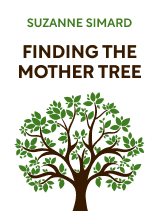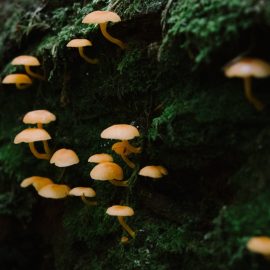

This article is an excerpt from the Shortform book guide to "Finding the Mother Tree" by Suzanne Simard. Shortform has the world's best summaries and analyses of books you should be reading.
Like this article? Sign up for a free trial here.
What is the wood-wide web? How does it help trees communicate with each other?
In Finding the Mother Tree, Suzanne Simard discovered that trees are intertwined via fungus in a complex resource-sharing network. She compares this to an internet satellite system, which she refers to as the “wood-wide web.”
Learn more about the wood-wide web below.
The Wood-Wide Web
Another reason Simard’s research has been so strongly resisted over time, she says, is simply the tenacity of the long-held competition model and the way it reflects the cultural perspective it grew out of. Competition for resources has been the prevailing paradigm for understanding nature throughout the history of modern Western science. In fact, it’s the predominant model for understanding all relationships, including those in human societies and economies.
Simard’s research suggests that competition is not the defining nature of the relationship between the trees and other plant life; the major dynamic is cooperation within the wood-wide web. We’ll look at how the wood-wide web model reflects a different view of nature, one that’s more consistent with our understanding of how our own bodies work, as well as with how some non-Western traditional societies function.
Anthropomorphizing the Trees
Some ecologists still critique Simard’s conclusions and emphasize the importance of recognizing competition in ecosystems. This seems to be a major ongoing battle of perspectives.
Simard has been accused of “anthropomorphizing” the trees, while simultaneously overemphasizing their cooperative nature. However, seeing trees as inherently competitive is more modern-human-like. Perhaps the scientists who can’t imagine trees having a symbiotic cooperative nature are more guilty of anthropomorphizing them.
In an interview, Simard says, “Our culture is not merely one of competition for scarce resources and the profits inherent in that scarcity. It is competition for competition’s sake…we compete aggressively just to do that, not for any gain.”
Forests as Organisms
In terms of how its components function interdependently, Simard concludes that a forest is essentially a single organism, like the human body. The wood-wide web between trees, she says, is similar to the neural networks in our brains, with the mycelium being the synapses along which nutrients, like neurotransmitters, travel. And like our brains, this is also a communication network that she says is “wired for wisdom, sentience, and healing.”
Of course, there is some amount of competition and dysfunction in a forest ecosystem, Simard acknowledges, just like in our bodies. We get diseases, and if we’re nutrient deficient our various organs and cells may compete for those nutrients. But if the body is healthy, the major operational mode is cooperation between the parts. Simard says a forest operates the same way.
(Shortform note: Michael Pollan, author of The Omnivore’s Dilemma and The Botany of Desire, says that until recently, even mentioning the possibility that plants could have intelligence would get you labeled a “whacko.” However, he says that the latest research supports the idea. The relatively new field of plant neurobiology shows that plants process sensory data in much the same way humans do. While that processing doesn’t happen via a brain, plants have their own sensory systems, and Pollan says plants have all the same senses as humans. He concludes that intelligence is an inherent feature of life.)
Ecosystems as Societies
Of course, there are more than just trees and fungi in a forest; a forest is a complex ecosystem of diverse flora and fauna. Simard says we can think of the larger forest ecosystems as similar to human societies. They’re complex, self-organizing, and adaptive. And, importantly, she says they are intelligent, especially with evidence of the wood-wide web.
Because ecosystems operate similarly to human societies, this could explain why we find a prevailing paradigm of competition in the modern scientific worldview and a paradigm of cooperation in the traditional indigenous worldview. Each paradigm is modeled after the society within which it develops.
Simard points out that objectifying nature, thinking of humans as separate from it (and even above it) is a modern Western construct and reflective of a colonialist mindset. First Nations tribes of the region had a symbiotic relationship with the land and existed entirely within these forest ecological communities, rather than viewing them from the outside. She ties all of this into the pressing issue of climate change.
Climate change, she argues, is occurring in large part because of human activities, and these activities are the product of a mindset that has moved away from viewing nature as living, sentient, and sacred, toward a mindset that can’t even imagine trees as sentient beings that have relationships. This, Simard argues, needs to change. Only when we recognize the forests as alive and intelligent will we have the wisdom to recognize that we must honor them because our lives depend on it.

———End of Preview———
Like what you just read? Read the rest of the world's best book summary and analysis of Suzanne Simard's "Finding the Mother Tree" at Shortform.
Here's what you'll find in our full Finding the Mother Tree summary:
- A look at Suzanne Simard's research on the relationships among trees
- What a Mother Tree is, and how it takes care of its community
- How trees communicate in an interconnected, underground network






